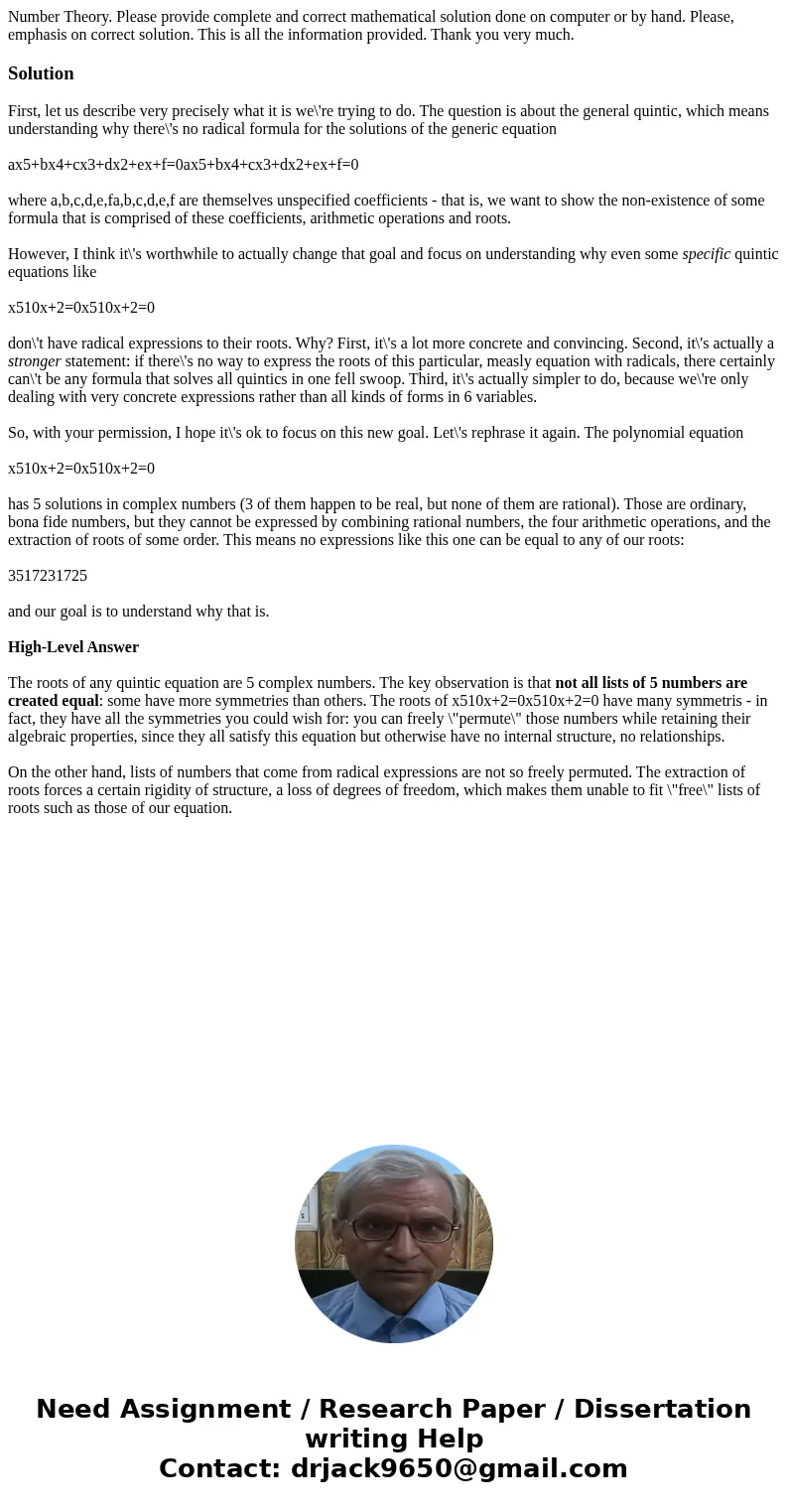Number Theory Please provide complete and correct mathematic
Number Theory. Please provide complete and correct mathematical solution done on computer or by hand. Please, emphasis on correct solution. This is all the information provided. Thank you very much.
Solution
First, let us describe very precisely what it is we\'re trying to do. The question is about the general quintic, which means understanding why there\'s no radical formula for the solutions of the generic equation
ax5+bx4+cx3+dx2+ex+f=0ax5+bx4+cx3+dx2+ex+f=0
where a,b,c,d,e,fa,b,c,d,e,f are themselves unspecified coefficients - that is, we want to show the non-existence of some formula that is comprised of these coefficients, arithmetic operations and roots.
However, I think it\'s worthwhile to actually change that goal and focus on understanding why even some specific quintic equations like
x510x+2=0x510x+2=0
don\'t have radical expressions to their roots. Why? First, it\'s a lot more concrete and convincing. Second, it\'s actually a stronger statement: if there\'s no way to express the roots of this particular, measly equation with radicals, there certainly can\'t be any formula that solves all quintics in one fell swoop. Third, it\'s actually simpler to do, because we\'re only dealing with very concrete expressions rather than all kinds of forms in 6 variables.
So, with your permission, I hope it\'s ok to focus on this new goal. Let\'s rephrase it again. The polynomial equation
x510x+2=0x510x+2=0
has 5 solutions in complex numbers (3 of them happen to be real, but none of them are rational). Those are ordinary, bona fide numbers, but they cannot be expressed by combining rational numbers, the four arithmetic operations, and the extraction of roots of some order. This means no expressions like this one can be equal to any of our roots:
3517231725
and our goal is to understand why that is.
High-Level Answer
The roots of any quintic equation are 5 complex numbers. The key observation is that not all lists of 5 numbers are created equal: some have more symmetries than others. The roots of x510x+2=0x510x+2=0 have many symmetris - in fact, they have all the symmetries you could wish for: you can freely \"permute\" those numbers while retaining their algebraic properties, since they all satisfy this equation but otherwise have no internal structure, no relationships.
On the other hand, lists of numbers that come from radical expressions are not so freely permuted. The extraction of roots forces a certain rigidity of structure, a loss of degrees of freedom, which makes them unable to fit \"free\" lists of roots such as those of our equation.

 Homework Sourse
Homework Sourse